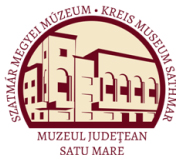Marta, Liviu: The Late Bronze Age Settlements of Petea-Csengersima (Satu Mare, 2009)
VI. Annexes
S34 Complex 8 (Fig. 11, 13) — A post hole (?) with circular outline (73 cm in diameter) occurred in the sterile soil, nearby the eastern margin of complex 3. The walls were 15 cm high, inclined towards the inside. The base was flat and the fill was dark-grey. No ceramic inventory. Not assigned to an archaeological culture. S34 Complex 9 (Fig. 11, 13) — A pit with oval-shaped outline (110 x 146 cm) was identified in the sterile soil. The walls were 30 cm high, inclined towards the inside. They were fit with a step in the southern side, the fill was yellowish-grey with scattered fragments of daub. No ceramic inventory. Not assigned to an archaeological culture. S34 Complex 10 (Fig. 11, 13) — A pit with oval outline (140 x 170 cm) was found in the sterile soil. The walls widened towards the outside and were 72 cm high. The base had 183 cm in diameter, and was 20 cm inclined. No ceramic inventory. Not assigned to an archaeological culture. S34 Complex 11 (Fig. 11, 13) — A pit with irregular contour (approximately like a bean seed) occurred in the sterile soil. The walls were 18-22 cm high, varying from steeply inclined towards the inside to vertical. The base was inclined, the fill contained yellow-blackish clay. Inventory: 68 ceramic shards that originated from at least 14 vessels, a bronze ring, much daub and twelve fragmentary bones. Besides three fragments that originated from two vessels which had excised-incised decorations was laid a bowl with faceted rim (PI. 39/7), as well as a fragment that had one bumishedblack side with fluting, and the other side was brick red coloured and laid on the base of the pit (PI. 39/5). Date/culture: In this pit the pottery was characteristic for both the Suciu de Sus culture and the cultural horizon Lăpuş II—Gáva I. Thus exact dating was not possible, perhaps it dated to the transition. Pottery shape PasteDecoration type Pottery type No. of elements Plate c GA 1 39/5 dish s 2Aa 1 39/6 dish f 2Ab 1 39/7 sJB_________________________ 1 39/8 S34 Complex 12 (Fig. 11, 13) — A pit laid in the confines of the sector and thus it was partially excavated over an arched surface (90 x 108 cm). The outline was identified in the sterile soil. The walls were inclined towards the inside and were 18 cm high. The base was flat, the fill was yellow-grey with charcoal inclusions and scattered fragments of daub. No ceramic inventory. Not assigned to an archaeological culture. S34 Complex 13 (Fig. 11, 14) — A pit with oval outline (126 x 154 cm) occurred in the sterile soil. The walls varied in inclinations, and were 16 cm high. The base was flat, the fill was dark-grey. Inventory: small fragments of daub. Not assigned to an archaeological culture. S34 Complex 14 (Fig. 11, 14) — A pit had pear-shaped profile and oval contour (119x140 cm). It was identified in the sterile soil. The walls were 72 cm high, and widened towards the outside. The pit reached a maximum diameter of 1,62 m at the base. In the upper part, the fill contained soil with scattered fragments of yellow clay and, at the base, the fill turned dark-grey. A layer of ash was laid on the base, and it contained a few bone fragments. Inventory: 21 ceramic shards (two originated from the same vessel as they were re-fired), two fragmentary bones, a piece of a grinding stone. The ceramic shards originated from at least 15 vessels. Date/culture: Lăpuş II—Gáva I. Pottery shape Paste Decoration type Pottery type No. of elements Plate cup f 1 Aa 1 39/9 dish s 2Ab 1 39/10 cup s AE 4 1 39/11 cup f AE 4 1 39/12 amphora s 1 dish s 2Ac 1 S34 Complex 15 (Fig. 11, 14) — A pit with oval outline (280 x 397 cm) occurred in the sterile soil. The walls were 78 cm high, and uncovered one or two steps. The steps were situated in the area of the walls that were inclined towards the inside. The fill was dark-grey. The base was irregular and a 136
